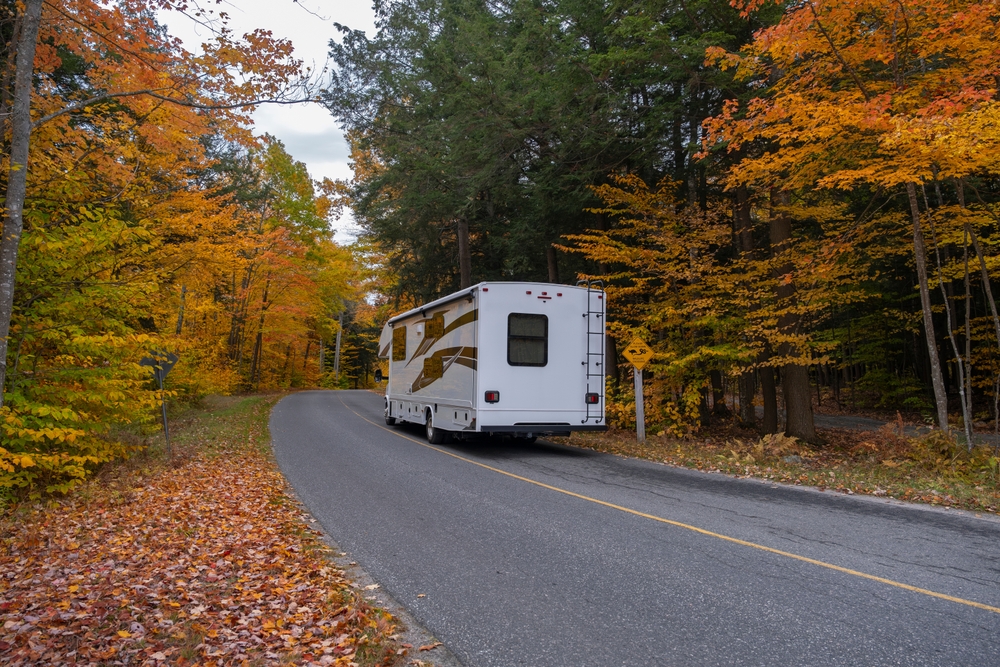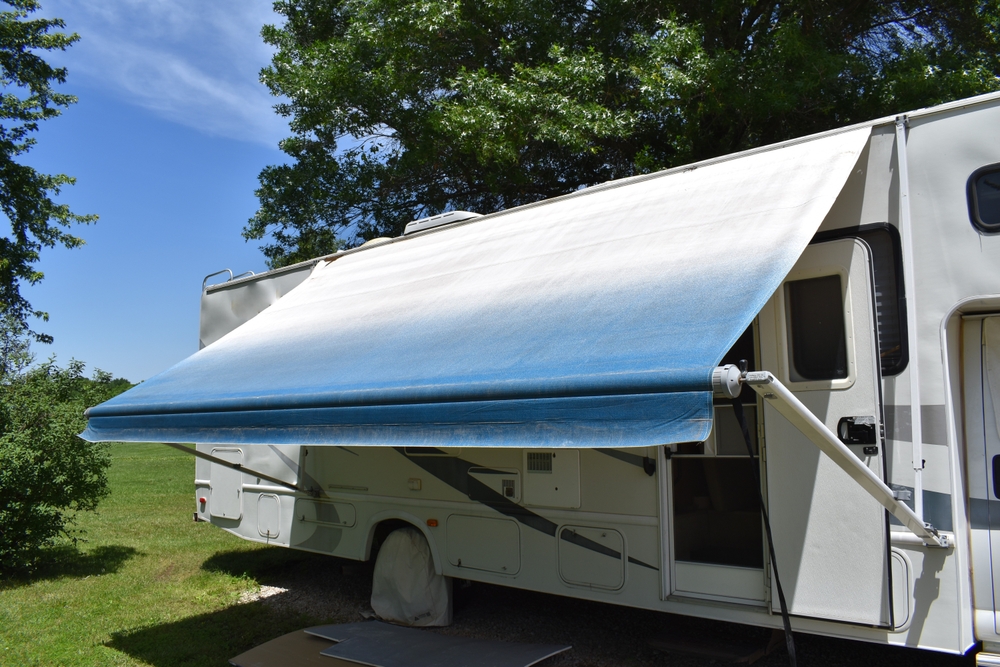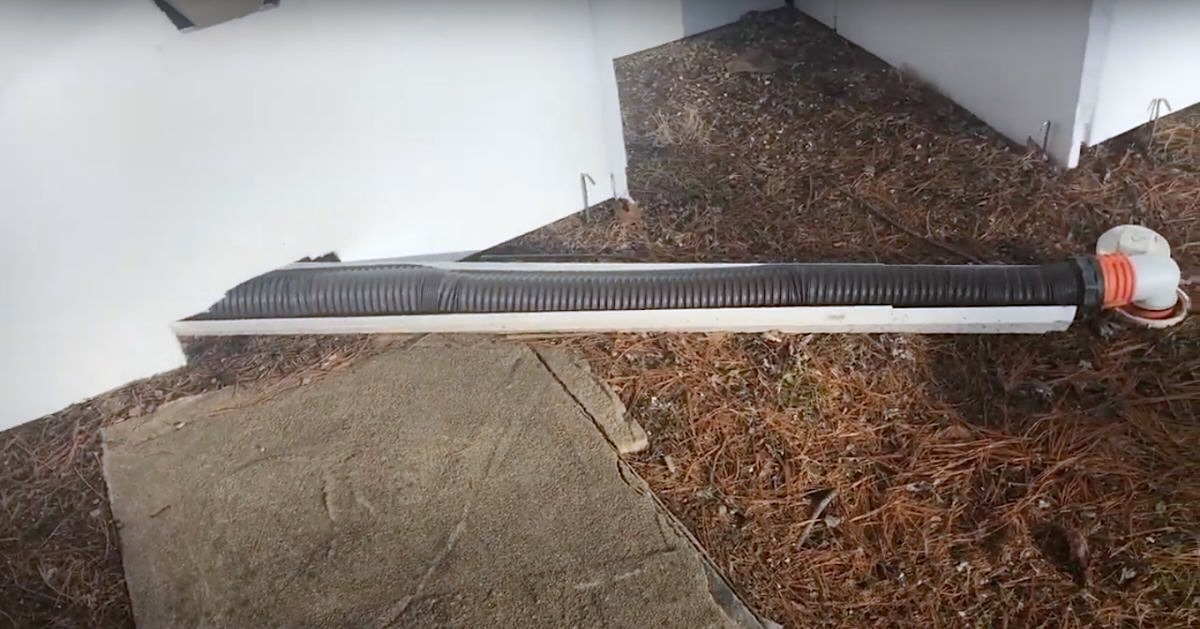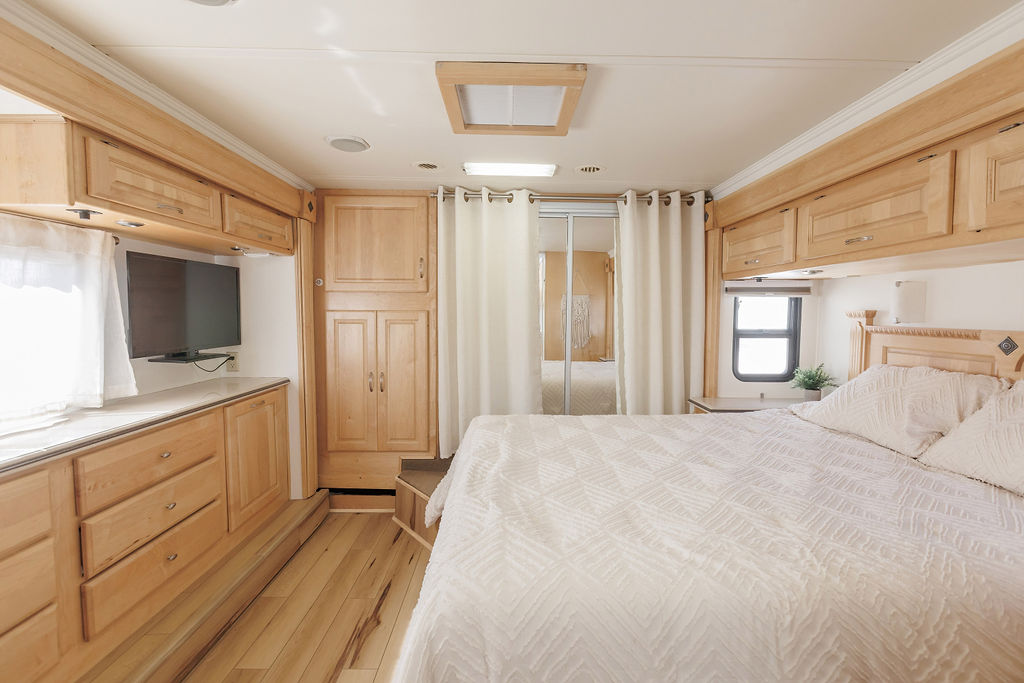
Whether you’re storing your RV for the winter, heading south for the season, or camping year-round, fall is the ideal time to give your rig a little extra attention. Mild fall weather makes outdoor work more comfortable, and catching small issues now—before months of cold, rain, or storage—can prevent expensive surprises later.
Some of these tasks help protect your RV from freezing temperatures. Others are simply good to do once or twice a year, no matter where you live.
1. Clean off the roof, slides, and exterior
Even if your RV won’t see snow, dirt and debris left on the roof or slide toppers can hold moisture and cause mold, staining, or damage to sealant. Wash the roof and exterior thoroughly, including undercarriage and wheel wells, while the weather’s still warm enough to dry.
If you’re uncomfortable climbing on the roof, consider hiring a mobile RV technician through RVHelp.com—it’s a quick job for a pro with the right equipment.
2. Protect the exterior finish
A coat of wax or UV protectant helps shed winter grime and sun exposure alike. Touch up any scratched paint or exposed metal to prevent rust. This is especially useful before storing outdoors or heading to salty coastal areas.
3. Inspect and reseal seams
Fall rain can find its way through even the smallest gap in sealant. Carefully check the roof seams and sealant around roof vents, windows, doors, and exterior trim. Look for cracks, bubbles, or lifting sealant and reseal where needed. This one matters whether you’re storing or living in your RV—water damage is one of the costliest RV repairs there is.
4. Clean and treat awnings
Wash both patio and slide-topper awnings with mild soap and water, being sure to let them dry fully before retracting, since moisture rolled up inside an awning can lead to mildew or fabric delamination over the winter. Apply a UV-protective spray to prevent cracking if recommended by your awning's manufacturer.

5. Clear and protect exterior vents
Appliance vents—especially for the water heater, furnace, and fridge—collect dust, spider webs, or even wasp nests. Cleaning them improves airflow and reduces fire risk. If your RV will be sitting for a while, add insect or rodent screens to prevent unwanted guests.
6. Service the water heater
Flush and drain the tank to remove sediment, and inspect the anode rod (replace if it’s more than half gone). This extends the life of the heater and improves efficiency, no matter your climate. Read our water heater maintenance guide for more detailed instructions.
7. Deep-clean holding tanks
Back-flush your black and gray tanks, then either leave them empty or with a small amount of water and tank treatment—depending on the product you use. Sanitizing the fresh-water system is also smart if you haven’t done it recently.
8. Winterize plumbing or prepare for cold weather
If your RV will be exposed to freezing temps, you’ll need to winterize the plumbing with RV antifreeze or compressed air. If you’ll be camping in the cold, switch to a heated water hose and insulate the connection point, and if you're on full hookups, make sure your sewage hose drains downhilll with no kinks where stuck liquid could freeze and cause a blockage.
Tip: Vinyl guttering makes an excellent downhill run for an RV sewage hose!

9. Empty, clean, and service the refrigerator
If you'll be storing your camper, turn off the fridge, wipe it clean, and prop the doors open to prevent mildew. On the outside of the RV, remove the vent cover (after turning off the fridge and closing the propane valve)) and vacuum or gently brush the condenser coils, and check the burner and vent area for dust or blockage to keep it running efficiently.
10. Remove food and clean inside
If you'll be storing your RV, wipe down cabinets, vacuum, and remove anything edible to deter pests. Mice are resourceful and will find that single forgotten granola bar if your RV is sitting still for a month.
11. Freshen up bedding and soft surfaces
Wash linens, curtains, and removable cushion covers. Rotate or flip mattresses if possible. A clean, dry interior helps prevent odors and moisture problems when doors and windows are closed more often.

12. Control moisture
Use desiccant tubs in storage, or a small dehumidifier if plugged into shore power. Even warm-climate RVers benefit from reducing interior humidity—it protects walls, cabinetry, and electronics.
13. Test safety devices
Replace the batteries in safety detectors that aren't hardwired and then press the test button on your smoke, LP gas, and CO detectors to make sure they all work. Check fire extinguishers and GFCI outlets. These quick checks can save your RV—or your life.
14. Service the furnace and propane system
Before temperatures drop, test your furnace to make sure it lights properly and blows warm air. It’s normal to smell a little burning dust the first time it runs, but persistent odor or soot at the vent could signal it needs professional cleaning. Vacuum floor vents, replace or wash return filters, and clear spider webs or debris from the furnace exhaust outside.
This is also a good time to give your propane system a quick check. Make sure tanks are filled, inspect hoses for cracking, and apply a soapy water solution to fittings to check for leaks. Verify your regulator is working properly and that your LP gas detector hasn’t reached its expiration date. If you notice anything suspicious—or just don’t want to mess with propane—a certified RV technician can test the system safely.
15. Prepare for cold weather living
For full-timers staying put in a cold climate, now’s the time to skirt your RV, improve weather stripping, put shrink plastic on single pane windows, and check heat tape on exposed pipes. Keep a backup propane tank or electric heater handy—the last thing you want is to be left without a heat source if your propane runs out in the middle of the night. This guide has some great tips for staying warm in an RV in cold weather.
16. Level RV, chock wheels, and protect tires
Leveling your RV when it's parked takes weight off the suspension and slides. Once level, secure the wheels with sturdy chocks so it won’t shift from wind or soft ground. Clean the tires before storage and use covers to protect them from sunlight and weather—UV rays can cause cracking and dry rot even when the RV isn’t being driven. If your RV will be sitting on gravel, asphalt, or bare ground, park on wood or rubber pads to prevent moisture damage and reduce stress on the tires.
17. Cover your RV if it will be stored outdoors
If your RV will sit outside through the winter, a breathable, well-fitted cover helps protect it from rain, snow, and debris. Look for one designed for your RV type that allows ventilation and won’t trap moisture. Avoid plastic tarps or overly tight covers—they can scratch the finish or cause condensation buildup that leads to mildew or corrosion.
Final Thoughts on Fall RV Maintenance
Whether your camper will be parked under snow, chasing sunshine, or serving as home all winter, fall RV maintenance is about prevention. A few hours now can save thousands in spring repairs—and make sure your next trip starts with peace of mind instead of a to-do list.
If you discover anything beyond your comfort zone—like a noisy furnace, cracked sealant, or a leak you’re unsure about—book a mobile RV technician through RVHelp.com. Fall is their busiest season, so it’s best not to wait until the first freeze.
FREE RV Maintenance Checklist Spreadsheet
A printable and editable spreadsheet to help you stay on top of RV maintenance tasks. Organized by frequency, with space to add notes and track completion dates, so you can keep your RV in top condition year-round.
By submitting this form, you'll receive our newsletter and the free download. You can unsubscribe at any time.
FREE RV Maintenance Checklist Spreadsheet
A printable and editable spreadsheet to help you stay on top of RV maintenance tasks. Organized by frequency, with space to add notes and track completion dates, so you can keep your RV in top condition year-round.
By submitting this form, you'll receive our newsletter and the free download. You can unsubscribe at any time.